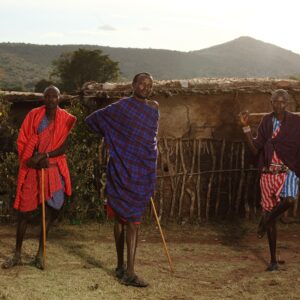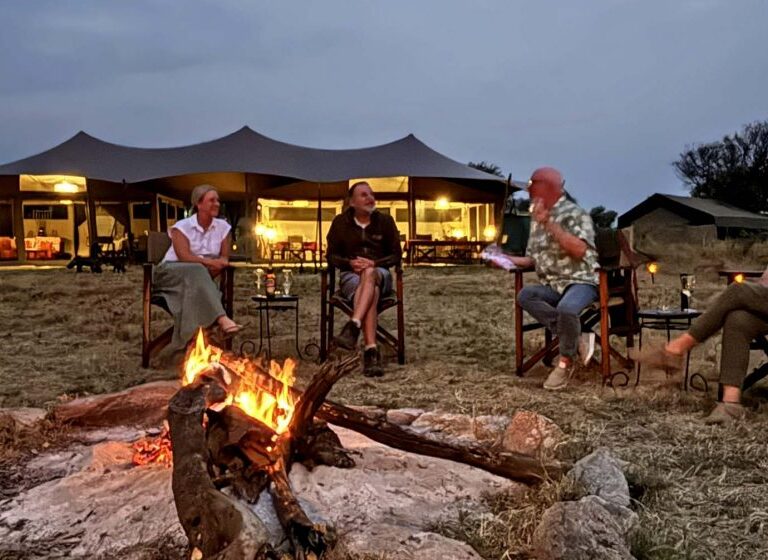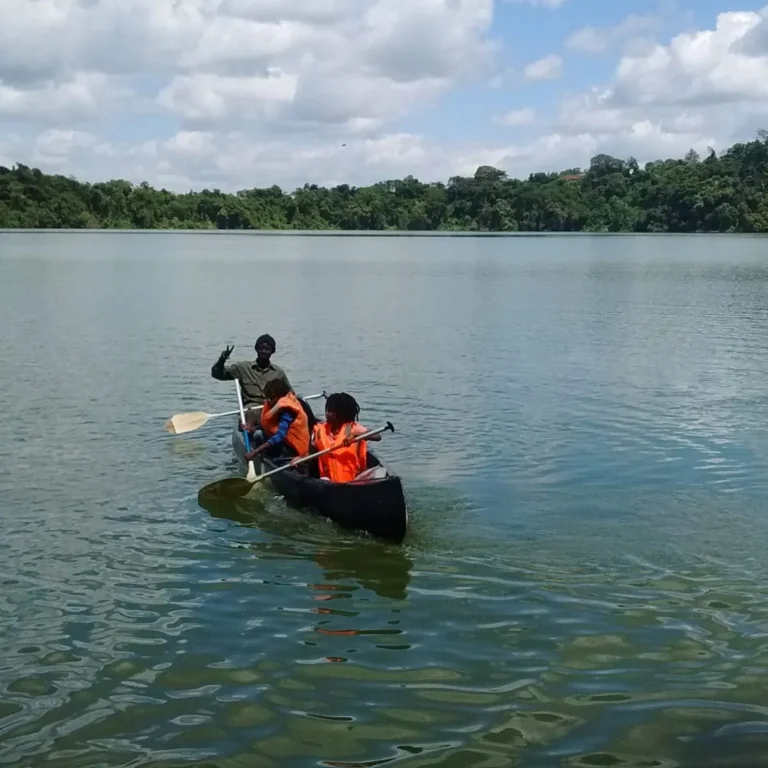Mount Kilimanjaro, the tallest peak in Africa, attracts thousands of trekkers each year, lured by the challenge of scaling its impressive 5,895 meters (19,341 feet) summit. Whether you’re a seasoned mountaineer or an adventurous first-time hiker, the trek is a physically demanding endeavor. One of the common questions many climbers ask before taking on the challenge is: Do I need trekking poles to climb Kilimanjaro? While trekking poles are not mandatory, they can significantly enhance your overall experience and safety during the trek. In this article, we’ll explore why trekking poles can be beneficial, how they can help prevent injuries, and whether or not they are essential for your Kilimanjaro adventure.
Climbing Kilimanjaro its not about technical rock climbing or mountaineering. Its a long, strenuous hike that takes you through diverse landscapes, from lush rainforests to alpine deserts and snow-capped peaks. The climb often completed in five to nine days, depending on the route you choose. The ascent slow, allowing trekkers to acclimatize to the thinning air at higher altitudes. However, the trek can be physically demanding. Even if you’re in good shape, the altitude and uneven terrain can challenge your endurance. This is where trekking poles come into play.
What Are Trekking Poles?
Trekking poles lightweight, adjustable poles that provide stability and support while walking on uneven terrain. They commonly used by hikers, trekkers, and climbers to reduce the strain on the legs, knees, and joints during long hikes or ascents. Trekking poles typically come in pairs, with each pole designed to be held in the opposite hand of the leg that is stepping forward.
Most trekking poles made of lightweight materials such as aluminum or carbon fiber. They are adjustable, allowing you to change their height to suit different terrains and hiking conditions. Some models feature shock absorption, which can further reduce strain on your body.
Why Should You Consider Trekking Poles for Kilimanjaro?
There are several advantages to using trekking poles when climbing Mount Kilimanjaro. They can make the journey easier, safer, and more comfortable, especially when traversing challenging terrains. Here’s why you might want to consider using trekking poles for your climb:
Reduced Impact on Joints and Knees
One of the most significant benefits of trekking poles, their ability to reduce the impact on your knees and joints, particularly during the descent. Descending Kilimanjaro can be hard on your knees, especially after several days of hiking. With trekking poles, you can distribute some of your body weight onto your arms, reducing the load on your lower body.
The added support helps minimize the risk of injuries such as knee pain, joint stress, and muscle strain. By utilizing your arms, trekking poles also help maintain a smoother and more controlled descent, especially when navigating loose rocks, scree, or steep terrain.
Improved Balance and Stability
The trail on Kilimanjaro its often uneven, with loose gravel, muddy sections, and large rocks. Trekking poles provide additional points of contact with the ground, helping to stabilize you as you walk. This is especially helpful when trekking over slippery or rocky surfaces where maintaining balance can be challenging. They also help to prevent falls and slips on the downhill sections of the trail, where the risk of injury is higher.
Trekking poles allow you to maintain a more stable posture, keeping your body upright and reducing the chance of twisting or spraining an ankle. This added stability is particularly important at high altitudes, where your balance and coordination can be affected by reduced oxygen levels.
Relief from Fatigue
Climbing Kilimanjaro its a long, endurance-testing adventure. The trek can take you up steep inclines and along stretches of rugged terrain. Trekking poles can help distribute the physical effort between your legs and arms, allowing you to preserve energy. By engaging your upper body, you prevent your legs from getting too fatigued, especially during the longer ascents.
This particularly valuable when walking for hours each day and for those who are prone to leg cramps or muscle fatigue. By using trekking poles, you’re less likely to exhaust yourself by overusing your legs and can maintain a steady pace throughout the trek.
Better Posture and Reduced Back Pain
Trekking poles can also improve your posture by encouraging you to walk with a more upright and balanced stance. When you’re carrying a heavy backpack or trekking through challenging terrain, it’s easy to hunch over or lean forward, which can lead to back pain or strain. Trekking poles help correct your posture by promoting a more natural walking form, helping to alleviate back and shoulder strain.
Helps with Breathing and Altitude Adjustment
At higher altitudes, breathing becomes more difficult due to the decreased oxygen levels in the air. By using trekking poles, you can adopt a more relaxed and efficient walking rhythm, which can help with breath control. The rhythmic motion of using poles can also help regulate your pace, making it easier to manage the effects of altitude sickness and improve your overall oxygen consumption.
Provides Extra Support on Difficult Terrain
While Kilimanjaro’s trails are well-maintained, they can still be quite challenging. In certain areas, the trail may become rocky, steep, or slippery, especially in rainy conditions. Trekking poles act as a valuable tool to provide extra support, making it easier to navigate these difficult sections. They also help with crossing streams or rivers by providing balance and support, especially when footing can be uncertain.
When Might You Not Need Trekking Poles?
On uphill climbs, dig into the ground and use your arms to help push your body up. On the descent, use the poles to reduce the load from your steps down. We highly recommend using trekking poles on Kilimanjaro, especially for the summit and descent. While trekking poles offer several benefits, they are not essential for everyone. Some climbers prefer not to use poles for personal reasons or simply don’t feel they need the extra support. Here are a few situations where trekking poles may not be necessary:
Experienced Climbers: If you are an experienced hiker or mountaineer who is accustomed to long-distance trekking in rugged terrain, you might find that trekking poles are unnecessary. Some seasoned climbers prefer to rely on their natural balance and strength, especially if they are used to carrying heavy loads without the aid of poles.
Lightweight Climbers: If you’re traveling light and prefer to carry minimal equipment, trekking poles may not be a priority. Some trekkers prefer to rely on their natural movements and strength, particularly if they’re not expecting rough conditions or strenuous terrain.
Flat or Easy Terrain: In some cases, the trails on Kilimanjaro may be relatively flat or easy to navigate, reducing the need for extra support. If the route you choose is straightforward with minimal inclines, you may feel comfortable trekking without poles.
Considerations when choosing Trekking Poles
When choosing trekking poles, consider the weight and material for ease of use, with carbon fiber being lightweight and aluminum durable. Opt for adjustable poles to adapt to varying terrains. Ensure the grip and straps are comfortable and secure, with ergonomic grips reducing hand fatigue and adjustable straps providing consistent support. These factors enhance performance and comfort during your trek.
Weight and Material: When selecting trekking poles, consider the weight and material. Lightweight poles made from carbon fiber or aluminum are ideal as they are easier to carry and use. Carbon fiber poles are lighter but tend to be more expensive, while aluminum poles are durable and more affordable.
Adjustability: Adjustable trekking poles are highly recommended for Kilimanjaro. The ability to change the length of the poles allows for better adaptability to different terrains. Look for poles with secure locking mechanisms to ensure they stay in place during your trek.
Grip and Straps: The grip and straps of the trekking poles are also important factors. Ergonomic grips made from cork or foam are comfortable and reduce hand fatigue. Adjustable straps ensure that the poles remain securely attached to your hands, providing continuous support.
How to Use Trekking Poles Effectively on Kilimanjaro
To use trekking poles effectively on Kilimanjaro, adjust them to form a 90-degree angle at your elbows. Shorten the poles for uphill sections and lengthen them for descents. Synchronize your pole movements with your steps, using opposite arms and legs together. This technique enhances balance, reduces fatigue, and provides stability on varied terrain.
Proper Technique: To get the most benefit from your trekking poles, it’s crucial to use the proper technique. When walking on flat terrain, your poles should be adjusted so that your elbows form a 90-degree angle. On uphill sections, shorten the poles slightly, and for downhill sections, lengthen them to provide extra support.
Synchronizing Your Movements: Synchronize the movement of your poles with your steps. For example, when your left foot steps forward, your right pole should move forward, and vice versa. This cross-body action enhances balance and stability.
Using Poles During the Summit Ascent: The final ascent to Kilimanjaro’s summit is often the most demanding part of the climb. During this stage, trekking poles can be invaluable in helping you maintain a steady rhythm and pace. They provide extra support on the steep, scree-covered slopes, allowing you to conserve energy for the challenging final push.
Additional Tips for Trekking Kilimanjaro
Prepare for your Kilimanjaro trek by incorporating trekking poles into your training routine to build familiarity and strength. Pack collapsible poles for easy transport, and check airline policies beforehand. Maintain your poles by cleaning them regularly and inspecting them for wear. These steps ensure you’re well-prepared for a safe and efficient climb.
Training with Trekking Poles: If you’re not accustomed to using trekking poles, it’s beneficial to incorporate them into your training routine before your Kilimanjaro climb. Practice on various terrains to get comfortable with the technique and to build up your upper body strength.
Packing and Transporting Trekking Poles: When packing for your Kilimanjaro trek, ensure your trekking poles are easily accessible. Collapsible poles are ideal as they can be packed into your luggage and extended when needed. Check with your airline regarding their policy on transporting trekking poles to avoid any issues during travel.
Maintaining Your Trekking Poles: Regular maintenance of your trekking poles is essential for their longevity and performance. Clean them after each use to remove dirt and debris. Inspect the locking mechanisms and tips for wear and tear, replacing any damaged parts as necessary.
Common Misconceptions About Trekking Poles
Trekking poles are often misunderstood. Some believe they are only for novices or those with mobility issues, but even experienced trekkers benefit from the added support and stability. Another misconception is that they slow you down; in reality, they help maintain a steady pace and reduce fatigue, enhancing overall trekking efficiency.
Trekking Poles Are Only for Novices: Some trekkers believe that trekking poles, only necessary for beginners or those with mobility issues. However, even experienced climbers can benefit from the added support and stability that trekking poles provide, especially on challenging terrains like Kilimanjaro.
Trekking Poles Slow You Down: Another misconception is that trekking poles will slow you down. On the contrary, when used correctly, trekking poles can help you maintain a consistent pace and reduce fatigue, potentially allowing you to cover more ground more efficiently.
Personal Experiences and Testimonials: Many climbers who have summited Kilimanjaro attest to the benefits of using trekking poles. For instance, John Doe, a seasoned trekker, shared, “Using trekking poles on Kilimanjaro was a game-changer for me. They provided the extra stability I needed on the rocky paths and helped reduce the strain on my knees during the descent.”
Similarly, Jane Smith, who completed the climb last year, said, “I was initially skeptical about using trekking poles, but they made a huge difference in my endurance levels. I felt more balanced and less fatigued, especially on the longer days.”
Popular models often Best trekking poles for Kilimanjaro:
Recommended trekking poles for Kilimanjaro include options from Black Diamond, Leki, and REI Co-op, with popular models like the Black Diamond Alpine Carbon Cork, Leki Micro Vario Carbon, and REI Co-op Flash Carbon, noted for their durability and lightweight design, particularly the carbon fiber options. Aluminum models, such as the Montem Ultra Strong or Cascade Mountain Tech, are also good budget-friendly choices. Key features to consider are a comfortable cork grip, reliable length adjustment, and a durable construction to withstand varied terrain, especially on the descent. Recommended Trekking Pole Models for Kilimanjaro
Black Diamond Alpine Carbon Cork: Known for durability and comfort, with soft cork grips and a stiff carbon fiber construction.
Leki Micro Vario Carbon: Lightweight, foldable, and durable, making them easy to store and comfortable for long treks, according to kilimanjaro-uncovered.com.
REI Co-op Flash Carbon: A best-seller for balancing weight, price, and durability, offering a lightweight carbon-aluminum design, according to Treeline Review.
Black Diamond Trail Pro Shock: Offers a lightweight design with shock absorption and adjustable length for customizable comfort.
MSR DynaLock Ascent Carbon: A versatile and compact option with a strong locking mechanism, suitable for long-distance hikes.
Montem Ultra Strong Trekking Poles: Constructed from 7075 aluminum for rugged conditions and durability.
Do You Need to Bring Your Trekking Poles?
While many trekking companies offer trekking poles for rent. You may want to consider bringing your own for several reasons. First, personal trekking poles, typically more comfortable and suited to your specific needs, as you can adjust them to your preferred height and style. Second, by bringing your poles, you ensure its in good condition and well-suited to the terrain.
If you decide to rent poles, make sure they, lightweight, adjustable, and of good quality. Cheap or poorly maintained poles may not offer the support and stability you need, which could compromise your safety and comfort on the trek.
Conclusion: Are Trekking Poles Essential for Kilimanjaro?
In summary, while trekking poles its not a requirement for climbing Mount Kilimanjaro. It’s highly recommended for most trekkers. They provide added stability, reduce stress on your joints, help you maintain energy, and improve your overall trekking experience. Given the varied terrain, long days of walking, and potential physical strain, trekking poles can be a game-changer, especially during the descent.








